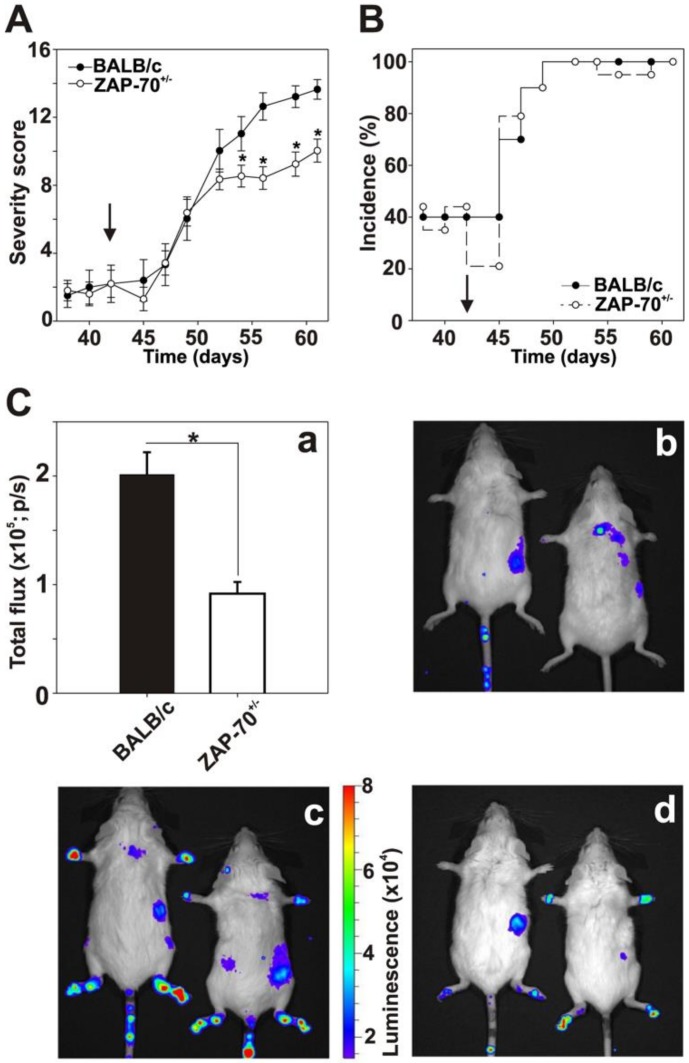Figure 1.
The comparison of the clinical parameters of recombinant human G1 (rhG1)-induced arthritis (GIA) in BALB/c and ZAP-70+/− mice. Female, 4-5-month-old n = 10 BALB/c (filled circles) and n = 19 ZAP-70+/− mice (empty circles) were immunized with rhG1 and dimethyl-dioctadecyl-ammonium (DDA) adjuvant intraperitoneally three times every third week. The severity score (A) and incidence (B) of the induced arthritis is shown on the diagrams. Black arrows show the date of third immunization (day 42). Severity of the disease was determined every second day with the help of a scoring system ranging from 1 to 4, based on the swelling, redness and ankylosis of the joints of the paws. Clinical scores are visualized as mean ± standard error of mean (SEM). Statistically significant (* p< 0.05) differences between groups of mice are indicated. In vivo biouluminescent imaging was performed on both healthy (C/b) and arthritic BALB/c (C/c) and ZAP-70+/− mice (C/d). The luminescence of intraperitoneally injected luminol correlated well with the myeloperoxidase activity of neutrophils. Figure shows representative images from in vivo imaging. Bar diagram (C/a) shows quantitative luminescence values calculated from the hind legs of arthritic n = 10 BALB/c (black bar) and n = 19 ZAP-70+/− (white bar) mice. Total flux is visualized as mean ± standard error of mean (SEM). Statistically significant (* p < 0.05) differences between groups of mice are indicated.

